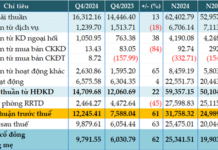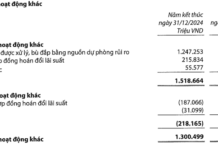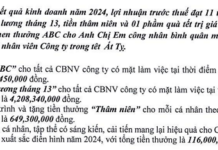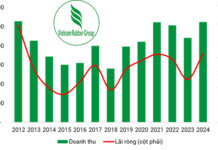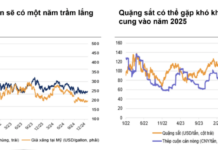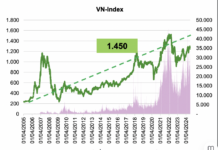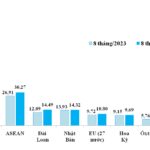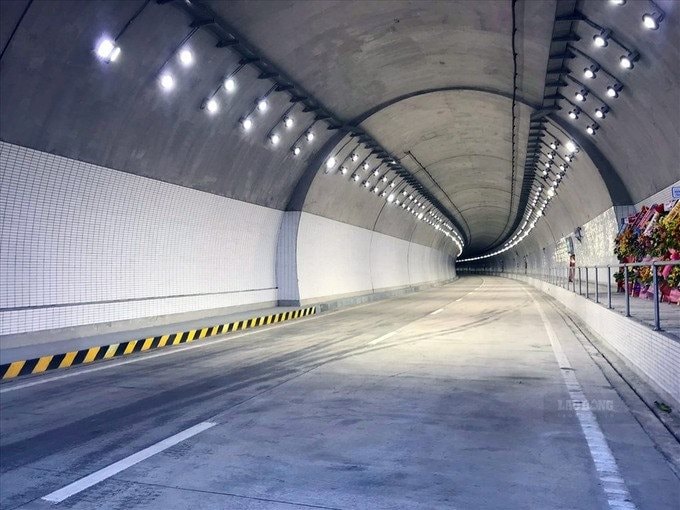
The Hai Van Pass has long been a source of dread for travelers and locals alike, with a saying that captures the perilous nature of this route: “Walking, fear the Hai Van. Sailing, fear the tsunami at Bat Cave.” This treacherous pass, located along National Highway 1A in Central Vietnam, cuts through a mountain range that stretches from the western border to the eastern coastline. It is known as the “First Grand Pass.”
Marking the natural boundary between Thua Thien-Hue Province and Da Nang City, this 21-kilometer-long pass was a daunting challenge for long-haul drivers and locals traveling through Central Vietnam in the 1980s and 1990s. With its steep gradients, tight curves, and a daily average of 1,000 vehicles, the 22-kilometer-long pass often witnessed accidents and traffic congestion.
However, all that changed on June 5, 2005, when, after more than 1,600 days and nights of hard work, the Hai Van Tunnel was inaugurated, providing a safer alternative to the winding 21-kilometer-long pass.
Feasibility studies for the tunnel project began as early as 1996, and in early 1998, the Prime Minister officially approved the investment with a total capital of over $250 million. The funds were sourced from a loan by the Japan Bank for International Cooperation (JBIC) and a partial counterpart contribution from the Vietnamese government.
A Turning Point in Infrastructure
On August 27, 2000, the Prime Minister inaugurated the construction of the Hai Van Tunnel. The main tunnel was designed to be nearly 6.3 kilometers long, 11.9 meters wide, and 7.5 meters high, with a clearance height of 4.95 meters. It accommodates two lanes, each measuring 3.75 meters in width, and a 1-meter wide maintenance lane. Along the tunnel, there are 18 expanded areas designated as emergency parking spaces.
The construction was divided into two sections: the southern entrance (in Da Nang) was undertaken by a joint venture between Dong Ah Construction Company (South Korea) and Song Da Corporation (under the Ministry of Construction), while the northern entrance (in Thua Thien-Hue) was handled by a consortium of Hazama Corporation (Japan) and CIENCO 6 Corporation (under the Ministry of Transport).
Working in three shifts around the clock, the engineers and workers made steady progress, averaging 12 meters of rock excavation per day at both ends of the tunnel. Regardless of the scorching summers or bitter winters, they persevered in their mission deep underground. At its peak, the project employed over 1,000 people, but most of the work took place out of sight, giving the impression of only a handful of workers from the outside.
As the project progressed, a major setback occurred five months after the commencement of construction. A 20-ton boulder, along with over 600 cubic meters of soil and rocks, suddenly collapsed onto the roof of the main tunnel from the southern end, creating a 6-meter-long gap. This incident caused a specialized concrete spraying vehicle to be ejected from the tunnel entrance, fortunately without any loss of life.
Due to their lack of faith in the Vietnamese contractor’s ability to handle the challenging ground conditions, the foreign experts insisted on hiring Hong Kong’s Kend Tunneling Company to rectify the situation at a cost of $1 million. However, after more than a week of efforts, Kend Tunneling conceded defeat and withdrew from the project. Subsequently, Song Da Corporation took charge and successfully resolved the issue for just $300,000 and VND 12 billion, saving over a third of the expected cost.
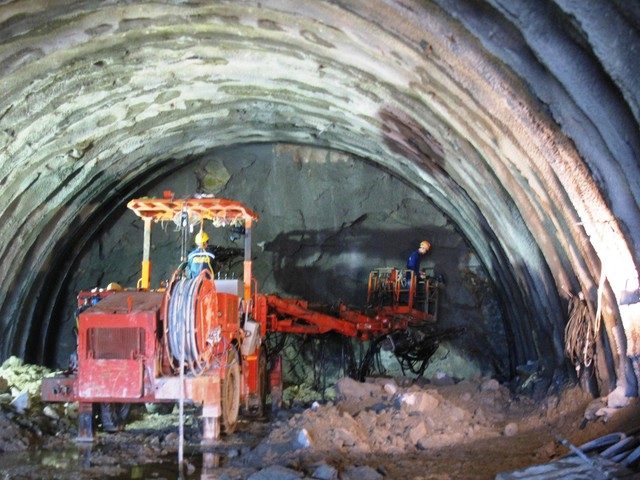
Workers loading explosives for rock blasting at the Hai Van Tunnel
A second incident occurred in March 2001 during the construction of the ventilation tunnel on the northern side. Due to the inclined excavation from the mountain top, water accumulated and, combined with a crack in the tunnel, caused a collapse. This led to a temporary halt in construction at the southern entrance while the issue was addressed.
This project marked the first time Vietnamese engineers applied the New Austrian Tunneling Method (NATM), a modern tunneling technology from Austria. NATM utilizes a combination of drilling and blasting, concrete spraying, and anchoring, resulting in reduced costs and improved construction efficiency.
After more than 36 months of construction, on October 30, 2003, the breakthrough of the Hai Van Tunnel was achieved with remarkable accuracy, deviating by only 2.5 centimeters from the intended alignment, well within the allowable error margin of 10 centimeters.
On June 5, 2005, the Hai Van Tunnel was officially inaugurated, becoming the largest road tunnel in Vietnam, the longest in Southeast Asia, and one of the top 30 longest tunnels in the world. This project not only boosted the economy and social development but also marked a significant milestone in the history of Vietnamese engineering.
Millions of Safe Vehicle Passages
Today, the Hai Van Pass no longer strikes fear into the hearts of drivers traveling between the north and south of the country. The journey through this area has been shortened to just over 10 kilometers (including the approach roads), reducing the distance by a third and the travel time by a fifth compared to the old pass. This not only saves time but also reduces fuel consumption and vehicle wear and tear. Most importantly, it has eliminated the notorious “black spots” for accidents and congestion along National Highway 1A at the Hai Van Pass.
The entire project spans 12.047 kilometers, including the main tunnel, which is 6,280 meters long, 10 meters wide, and 7.5 meters high, accommodating two lanes of traffic. A parallel rescue tunnel, with similar dimensions, is connected to the main tunnel by a series of transverse tunnels for emergency evacuation if needed. This tunnel is the longest and most modern in Southeast Asia and ranks among the top 30 longest tunnels worldwide.
On average, approximately 6,500 vehicles pass through the tunnel daily, and during holidays and festive seasons, this number can double.
In addition to its functional role, the Hai Van Pass has become a popular tourist destination. Towering nearly 500 meters above sea level, the pass offers a breathtaking view of the majestic mountains on one side and the vast ocean on the other, captivating visitors from the moment they arrive.
Beyond its natural splendor, the Hai Van Pass also holds historical significance as a crossroads between the northern and southern regions of Vietnam. One of the most notable landmarks is the Hai Van Quan, a National Relic that served as a crucial checkpoint for trade and defense during the feudal era. Perched atop the pass, at the border between Thua Thien-Hue Province and Da Nang City, Hai Van Quan bears witness to the rich history and strategic importance of this region.
The Cost of High-Speed Rail in Vietnam: $43.69 Million for 1 km of Track, with 60% on Viaducts to Ensure a Straight Route
The pre-feasibility report for the high-speed North-South railway project by the Ministry of Transport estimates the project’s investment rate at $43.69 million per kilometer. This ambitious venture promises to revolutionize transportation in the region, offering unprecedented speed and efficiency. With a projected investment of $43.69 million per kilometer, this project is poised to become a landmark infrastructure development, shaping the future of travel and connectivity in the area.
The Rise of Imports: Chinese-Made Products Flooding In
In the first eight months of 2024, imports from China surged to a staggering 92.5 billion USD, reflecting an impressive year-on-year growth of 34.4%. This translates to a significant increase of 23.66 billion USD compared to the same period in the previous year, as revealed by the latest data from the General Department of Vietnam Customs.
Anara Binh Tien Eco Resort: Your Tropical Paradise – Presented by Tin Hung Investment, Premier F1 Distributor
“Tín Hưng Investment, a proud member of the prestigious Joyoung Universal Group, has taken a momentous leap forward by securing the F1 distribution agency for the prestigious Anara Bình Tiên Ocean Leisure Sanctuary project. This pivotal move solidifies Tín Hưng Investment’s standing in the luxury real estate market, marking its emergence as a formidable player in the industry.






